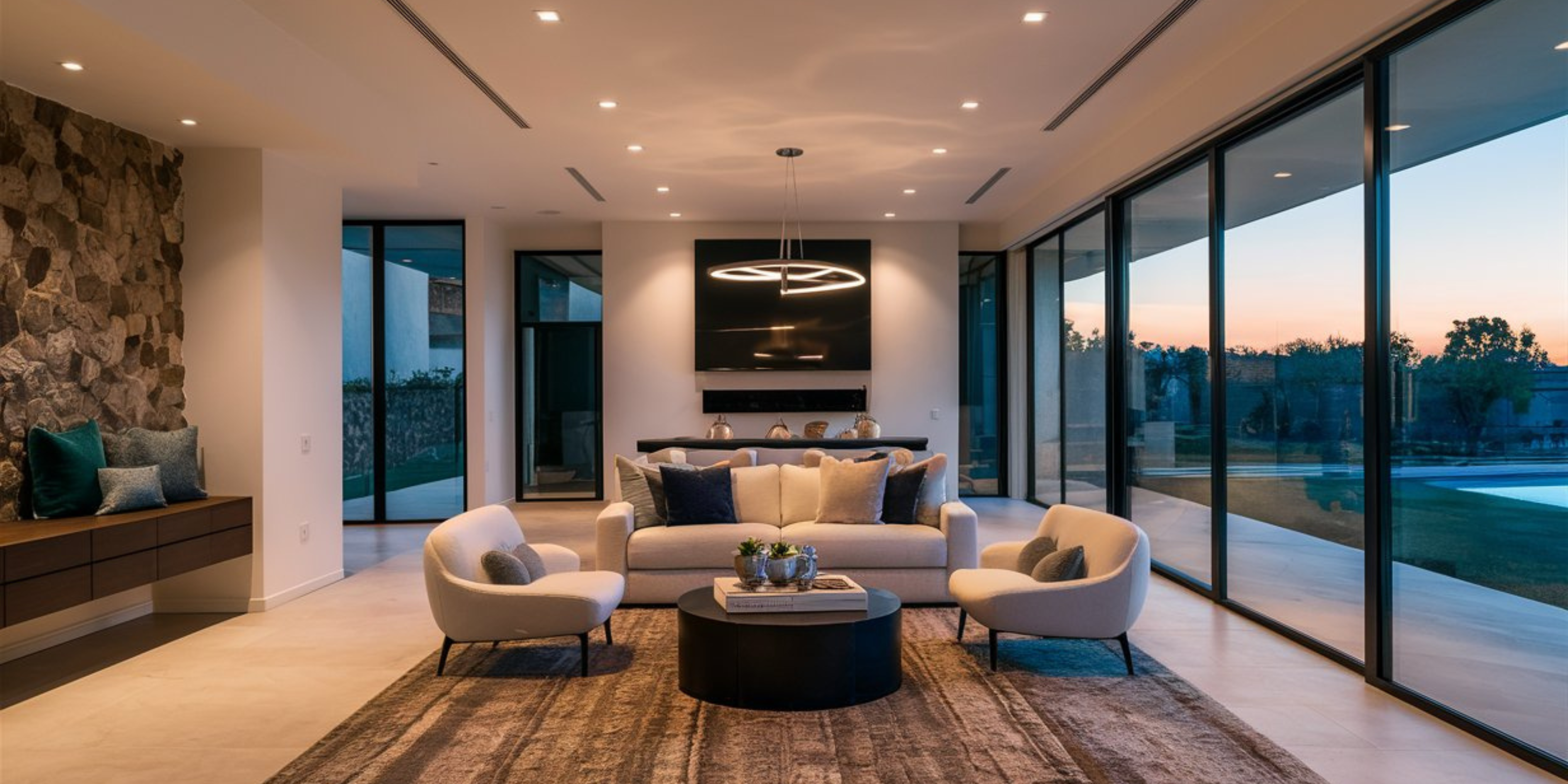The Architecture of Light: Mastering the Art and Science of Facade Lighting Design

Architectural lighting design is a strategic art form that shapes how we perceive and experience a space. By thoughtfully integrating light into a building’s design, you can transform an ordinary area into a captivating environment. This holds true for both the intimate setting of a home and the dynamic environment of a commercial space.
Modern Residential Lighting Ideas: Creating Atmosphere & Comfort
In homes, lighting is key to creating atmosphere, comfort, and functionality. Modern residential lighting ideas go beyond a single overhead fixture to create layered, dynamic environments. The goal is to make a space feel not just lit, but truly alive.
This involves a mix of different lighting types:
- Ambient Lighting: The foundation of a room's illumination. Recessed lights or chandeliers provide the general glow that makes a space functional.
- Enhance Focus: Properly diffused and balanced light reduces glare on screens and work surfaces, allowing employees to concentrate better.
- Task Lighting: Focused illumination for specific activities, such as pendants over a kitchen island or a reading lamp next to a chair.
- Accent Lighting: The final layer that adds drama and visual interest. Think of spotlights on a piece of art or uplights highlighting a unique architectural feature.
By combining these layers, lighting can be customized to suit any mood or occasion, from a vibrant family gathering to a quiet, relaxing evening.
Commercial Workspace Lighting Design: Boosting Productivity & Brand
For businesses, lighting is a critical tool that influences everything from employee productivity to customer experience. Commercial workspace lighting design is no longer just about utility; it’s a strategic asset.
- Innovative Commercial Lighting Solutions: Modern offices use lighting to define different zones, such as bright, stimulating light for collaborative areas and softer, more subdued lighting for break rooms. This helps guide people through the space and supports various activities.
- Enhancing Brand Identity: Lighting can be used to emphasize a company's brand, whether through a striking illuminated logo in the lobby or a specific color temperature that matches the brand’s identity.
A well-designed lighting plan can also contribute to a healthier work environment, reducing eye strain and boosting employee morale.
The Intersection of Design and Sustainability
The best Architectural lighting design in hyderabad today is also sustainable. By choosing sustainable architectural lighting solutions, you can create powerful and beautiful effects while being responsible stewards of the environment.
- Energy Efficient Lighting Solutions: The foundation of this is the use of high-efficiency LEDs, which consume a fraction of the energy of traditional bulbs and last significantly longer. In fact, a single LED bulb can last for over 50,000 hours, which is more than 50 times longer than a traditional incandescent bulb.
- Smart Automation: Integrating smart systems with sensors and controls ensures that lights are only on when needed, further minimizing energy waste. Studies show that smart lighting automation can reduce lighting energy consumption in offices by 30-60%.
In essence, whether for a home or an office, architectural lighting design is an investment that pays dividends in both aesthetics and functionality. It’s the final brushstroke that makes a space truly complete.
